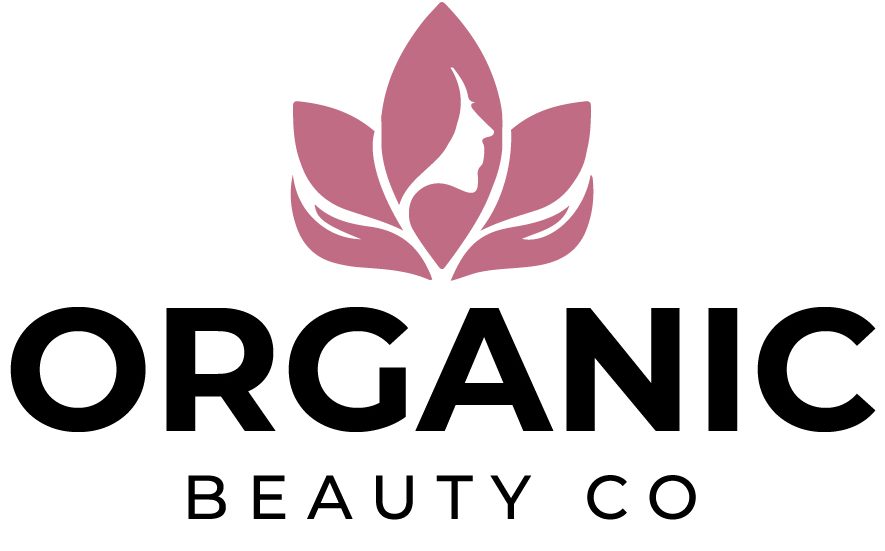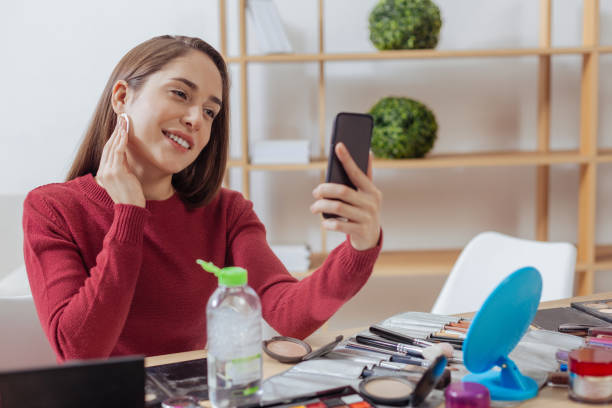I quit my office job at the beginning of February in order to take part in a residency for writers at my apartment, which I founded. After five months of being mentally and physically numbed every day by my service sector work, I suddenly found myself alone, uncomfortably, and well-rested. It’s often in these times of emptiness that I find myself swept up by fads or manias, a new stupid hobby to which I can devote my entire free time. It was YouTube videos with women promoting beauty products. Obviously.
My relationship with the cosmetics industry is a complex and unique one. I won’t do anything boring or unnecessary to me. My body hair tends to be au naturel, and I don’t own a dryer. In the last four years, I don’t remember a single time that I have worn a full face of makeup. I spent the first 20 of my life reading fashion magazines and spending a lot of time painting my nails every week. I’m all for a beauty regimen that is about self-expression, creativity, joy, and delight. Not one that is based on obligation.
These YouTube “beauty addicts” seem to be genuinely interested only in the products themselves. Beauty YouTube is one of the most popular sections of the website. Many beauty gurus have built their brands, and top stars like Bethany Mota or Zoella enjoy millions of subscribers. They have a very developed YouTube genre with videos that fall into a variety of categories.
Many people do makeup tutorials, but they often admit that they’re not professionals. Many do haul videos in which they showcase what they purchased on their recent shopping trips. The majority do a monthly gushy roundup. They have “empties” (products they’ve finished) videos, “what’s inside my bag” videos, skincare routine videos, and lookbooks that show the season’s clothes.
These videos are not interesting. The videos can be long, sometimes exceeding 15 minutes. They may include lengthy spiels about thirty-dollar cleansing waters or Christian Dior’s lip balm, which costs forty-five dollars. Beauty YouTube is more narcotic than traditional entertainment, and you can tune it in or out. Each video is composed of detailed descriptions of the color, texture, and consistency of each product. Popular beauty vlogger Tati described lipgloss in a recent drugstore haul as smelling like hot chocolate, but not the hot chocolate already made. It smells just like a hot chocolate packet.”
These videos are full of hyperbole and are filled with a lot of energy. This is what makes beauty YouTube personalities so popular. Hyperbole is the currency of these videos – beauty vloggers are obsessive about everything. Ingrid, the channel MissGlamorazzi with two million subscribers, said that Kenra Platinum Finishing Spray was life-changing. Her enthusiasm is something no product video watcher would ever question. In a favorite video, London YouTuber Essiebutton stated that “there’s something unimaginable about this product.” It’s a joy to use. In a video of her favorite eyeshadow pallets, she said: “I feel like I’d die if I didn’t buy the Lorac Pro Palette.”
These vloggers build relationships with their subscribers through their over-the-top enthusiasm. They wouldn’t have such a large audience if they didn’t make their viewers feel connected to them. They often have humble and self-deprecating personalities, calling themselves “dorks,” “weirdos,” or “weirdos.” Miss Glamorazzi will put “#INGRIDISWEIRD” after a funny moment.
These women are not strange. These women are not nerdy, awkward, or weird. These are pretty girls who live next door. They are wholesome, basic bitches, but they are also Christian. Many of them hide their faith by adding Bible verses to the “About’ section of their channels. As a famous Juicy Couture advertisement once said, they are the quintessential Nice Girls who like Stuff. The approachability of these girls is purposefully designed; the stock character of the chatty girl pal is clearly a marketing tool.
The idea that shopping and product-oriented channels are trying to sell something — gasp is not new. Beauty YouTube is a big business. These women monetized their channels through many different methods. YouTube is based on advertising sales and encourages users to upload new content. The CPI, or Cost Per Impression, is the rate YouTube pays for every thousand views. This is largely based on the popularity and consistency of the creator. YouTube does not reveal the exact dollar amounts. However, popular vloggers can easily earn five figures per year from YouTube ads.
StyleHaul is a multi-channel agency that acts as a mediator between YouTube and vloggers. StyleHaul negotiates flat-rate CPIs for their 4,00+ channels. This means that creators don’t have to be at the mercy of YouTube. Also, they can provide marketing and legal support as well as facilitate product endorsements. This is another major source of income for beauty bloggers.
The homey charm of multi-channel networks and the creators who are part of them is appealing to corporate worlds that don’t quite understand YouTube. Disney purchased Maker Studios for $500 million in March 2014. StyleHaul hired Paramount Studios Vice President of Business Development to help create a new series for its channel. But its strength still lies in its legion of semi-independent contractors. The 138 million subscribers to its channels dwarf the YouTube channels of traditional fashion and lifestyle media.
StyleHaul must, therefore, remain invisible in order to achieve success. Beauty vloggers are known to receive free samples and produce sponsored videos. It’s not uncommon to see multiple tutorials on the same product in a single week, posted by different channels. Sometimes, an entire channel is sponsored. Netflix sponsored videos on NikkiPhillippi – a track that has six hundred thousand subscribers. Nikki, when mentioning their sponsorship, says, “I watch Netflix every day of my life.” Some YouTubers have online shops that sell the products they promote. They get a cut of sales. The huge amount of money these channels have made from ad revenue is not discussed.
The beauty industry has used the same language for years to describe products, such as “highly pigmented,” “having a good color payoff,” “buildable,” or “wearable.” But beauty YouTube has gone further than that and perfected the rhetorical voice of the best friend who offers advice, which has been the goal of lifestyle media. The blurbs on products in magazines sound bizarre and fake as if they are trying too hard. I was shaking my head at a Women’s Health article that described portable sunscreens as “like the short guy that you call for a date when you’re looking for a wedding; this is cute, convenient.”
It is because of this that I am more likely to purchase BB creams or gel eyeliners recommended by vloggers than those in magazines. Despite the calculated likeability of beauty YouTubers, I still like them. My favorite beauty vlogger is Essiebutton. She is a Canadian who lives in the UK and is funnier than many other beauty vloggers. She sang “Let’s talk about foot, bay-bee” to the tune “Let’s Talk About Sex” before describing a foot cream. She made a video of non-beauty faves, and one of them was Canadian milk in a bag. I like the haul video that she and her boyfriend made about a recent flea market. Her boyfriend told the camera, “We have a serious problem: We love junk.”
The women on beauty YouTube appear to be genuinely friendly. In their favorite videos, they mention videos that they liked and recommend channels. They frequently make guest appearances on each other’s media. Los Angeles and London are home to the two biggest contingents of beauty bloggers. It is not unusual for them to travel around the world to meet. It’s not a coincidence that I’ve been drawn to a group of nice virtual girls who want to chat with me about tinted lip balm.
The most popular click-bait headline, “Is Facebook Making Us Lonely?” is a subtle jab at this phenomenon. Social media is a place where companionship is sold at the cost of marketing data. The pretend company of beautiful, approachable women is enough to sell to the most valuable demographic: women aged 14 to 34. It’s no wonder that vloggers are valued at millions.

